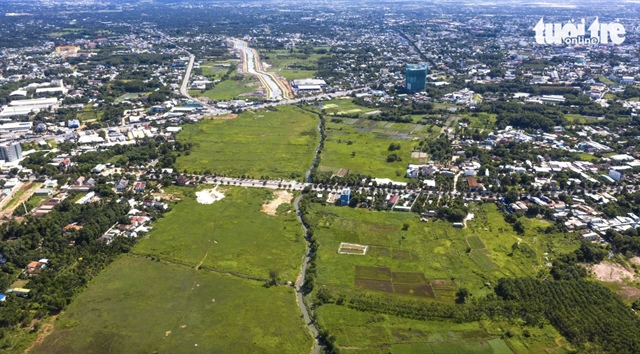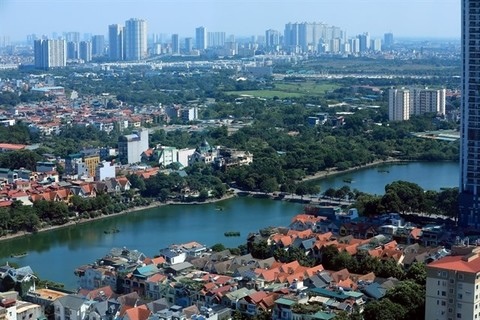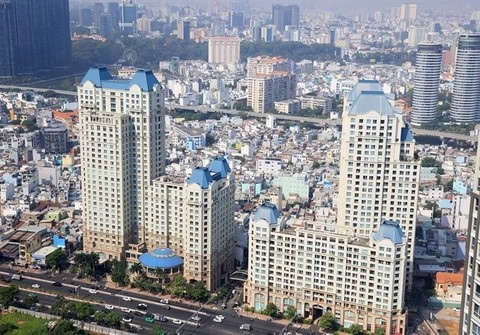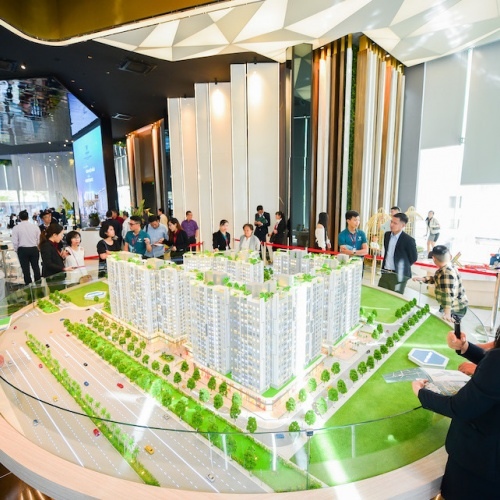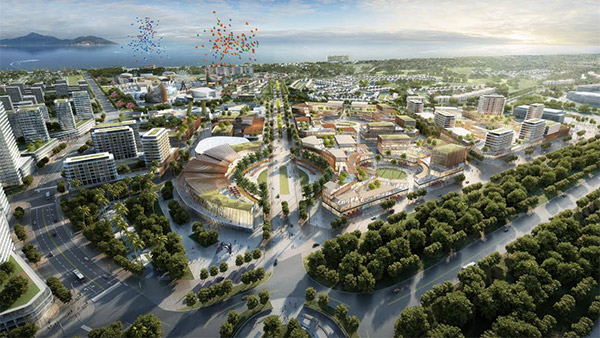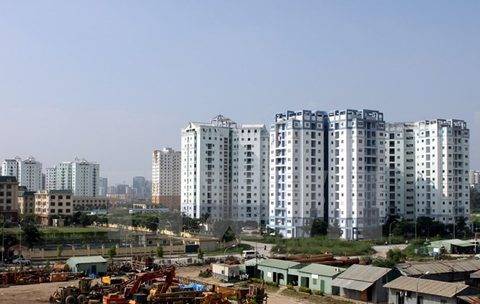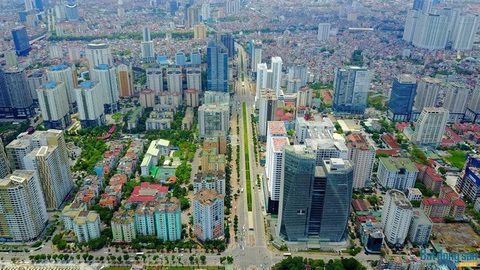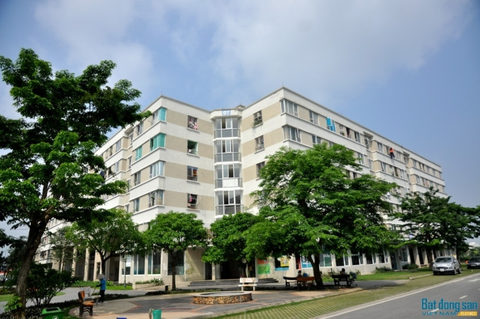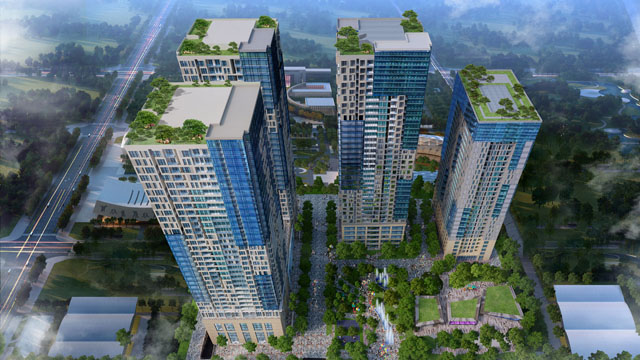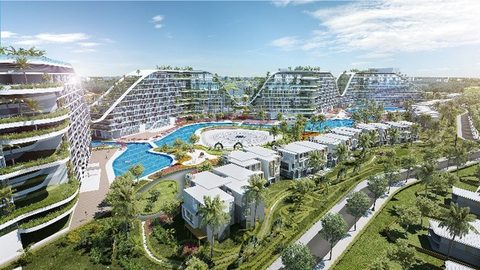Vietnamese smart cities start with infrastructure
Vietnamese smart cities start with infrastructure
Vietnam is pursuing sustainable development in the wave of the Fourth Industrial Revolution, with a focus laid on creating smart cities. But how can such cities become smart, resilient, and more liveable? Siemens Vietnam’s president and CEO Pham Thai Lai spoke to VIR’s Thanh Tung about the path Vietnam should take to realise its dreams.
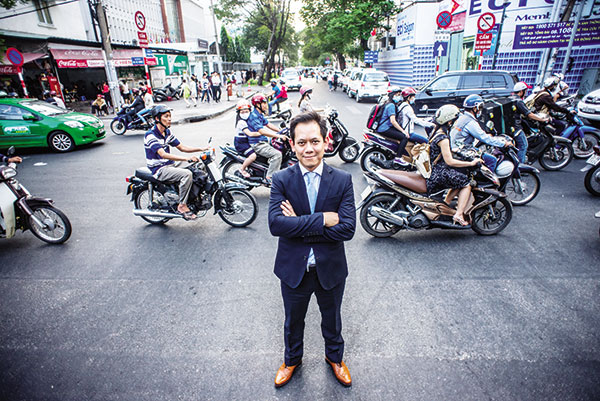
Construction of smart cities has become a big global trend in recent years. You have been living in Vietnam for five years. What smart city solutions do you think Vietnam should introduce into its socio-economic development plan?
Today, Vietnam is faced with major urbanisation, which poses great challenges to the key basic infrastructure of cities like Hanoi, Ho Chi Minh City, Danang, and Haiphong. City mayors and planners are challenged to provide sustainable city infrastructure such as transportation, energy, construction, healthcare, water, and much more in order to make their cities attractive, liveable, and also more competitive.
Transportation, for example, is a key part of urban infrastructure, since people in cities want to move efficiently from A to B. This can be achieved by widely deploying public transportation systems such as metro lines or BRT systems, as well as implementing intelligent traffic management systems to regulate and optimise the traffic flows in the city. A smart integration of these systems can provide convenient services to the people. For example, it could be possible to advise inhabitants to use the metro due to dense traffic or congested roads – in real time.
Smart technologies can also help to optimise existing infrastructure. For example, the Munich metro system was implemented in the early 1970s, to carry around 250,000 passengers per day. The same system is now capable of transporting around 800,000 passengers per day. This was made possible with smart automation and signalling technologies that allow a higher flow of trains per hour without having to build extra tunnels or tracks.
For Vietnam, it is of vital importance to start implementing these basic infrastructure innovations in a smart way.
What are the main emerging trends in the way cities are adopting smart urban technologies? Besides developing a good transportation network, what should Vietnam do to create its smart cities?
There are several steps needed to build intelligent and smart city infrastructure. As mentioned above, the first step is to start deploying basic infrastructure like metros or traffic management systems.
The second step would be to automate these systems or make them more intelligent, for higher efficiency and reliability. Examples include driverless trains and dynamic tolling or congestion charging systems.
The third step would be deploying Industry 4.0 technologies supported by cutting-edge ICT technologies to interconnect the various mobility systems and services in order to make them fully integrated and intelligent.
This can be done by using the Industry 4.0 platform called Mindsphere, which we are currently rolling out commercially into the market. Mindsphere interconnects individual systems, analyses their data, and makes it possible to provide individual services to travellers, for example advising people to use their own cars, the metro, or car sharing services, depending on the traffic situation and the time budget.
One of the biggest challenges impeding Vietnam’s path to building smart cities is climate change. What is your view about this? How can Siemens support Vietnam in this regard?
Besides being one of the most populous countries in the world, Vietnam is also one of the countries most vulnerable to climate change. It has a large amount of land area at or even below sea level. Furthermore, research reveals that about 80 per cent of carbon dioxide (CO2) emissions are generated in cities. As Vietnam has grown and is still growing rapidly, the energy demand is enormous and growing by around 12 per cent every year. This has a negative impact on the country’s CO2 emissions. With intelligent building management systems from Siemens, energy consumption can be reduced significantly – up to 30 per cent – as proven at the iconic Taipei 101 tower in Taiwan. Today, hundreds of these systems are implemented in commercial buildings like the German House in Ho Chi Minh City, in residential buildings, and resorts.
Our highly efficient gas turbines are responsible for the most efficient power plant in Vietnam helping to reduce CO2 emissions by nearly five million tonnes per year compared to the world average. Our power transmission technology and smart grids help to minimise the loss of transmitted power over long distances, due to the centralised power generation structure in Vietnam.
The Fourth Industrial Revolution promises the application of digital technologies. How crucial will these technologies be for our lives in smart cities?
The use of Big Data, machine-to-machine learning, analytics, and automation is changing the world of infrastructure. The Internet has arrived in the industrial sector. It is not a matter of “How”, but rather “When” it will fully emerge in our daily lives and socio-economic systems. Vietnam will follow this trend sooner or later.
Siemens has acquired knowledge in many sectors. As mentioned above, our Industry 4.0 platform Mindsphere will play a central role in interconnecting and analysing Big Data. Digital technologies are integrated into urban planning from the very start. Thus, cities benefit immediately by reducing congestion, improving air quality, and increasing energy reliability. This will help to improve the quality of life.
What challenges will Vietnam face in developing smart cities?
Currently, the basic infrastructure in Vietnam is weak and insufficient to meet the demands of the rising population, urbanisation, and the ceconomic growth of the country. At the same time, the requirements for each city are different. The needs of Hanoi are different than those of Can Tho or Ho Chi Minh City or Haiphong. As such, it is important for each city to set individual priorities and develop their own master plan that reflects their key needs.
The good thing is that technologies and modern solutions are available to support the implementation of such a master plan. There is no need to wait for technology to catch up, but rather an urgent need to set the right priorities and rigorously execute the plan.
We are working with different cities in Vietnam to contribute with the experience we have gained in more than 200 countries all over the world. We are grateful for the opportunity to help make Vietnamese cities smarter and therefore more sustainable and liveable.
You said that weak road infrastructure remains a big headache for authorities. So what can Siemens offer to Vietnam to solve this?
We are working with the Ministry of Transport and different city governments to make transportation more efficient by implementing intelligent traffic lights and traffic management systems to regulate the flow of traffic.
We believe that a widely-deployed public transportation system will be the key factor to making cities more liveable and more competitive.
Our metro solutions are available to support cities such as Hanoi and Ho Chi Minh City in doing this. Further down the road, driverless trains, driver assistance systems, or e-ticketing systems will make commuting more convenient for the urban population.


